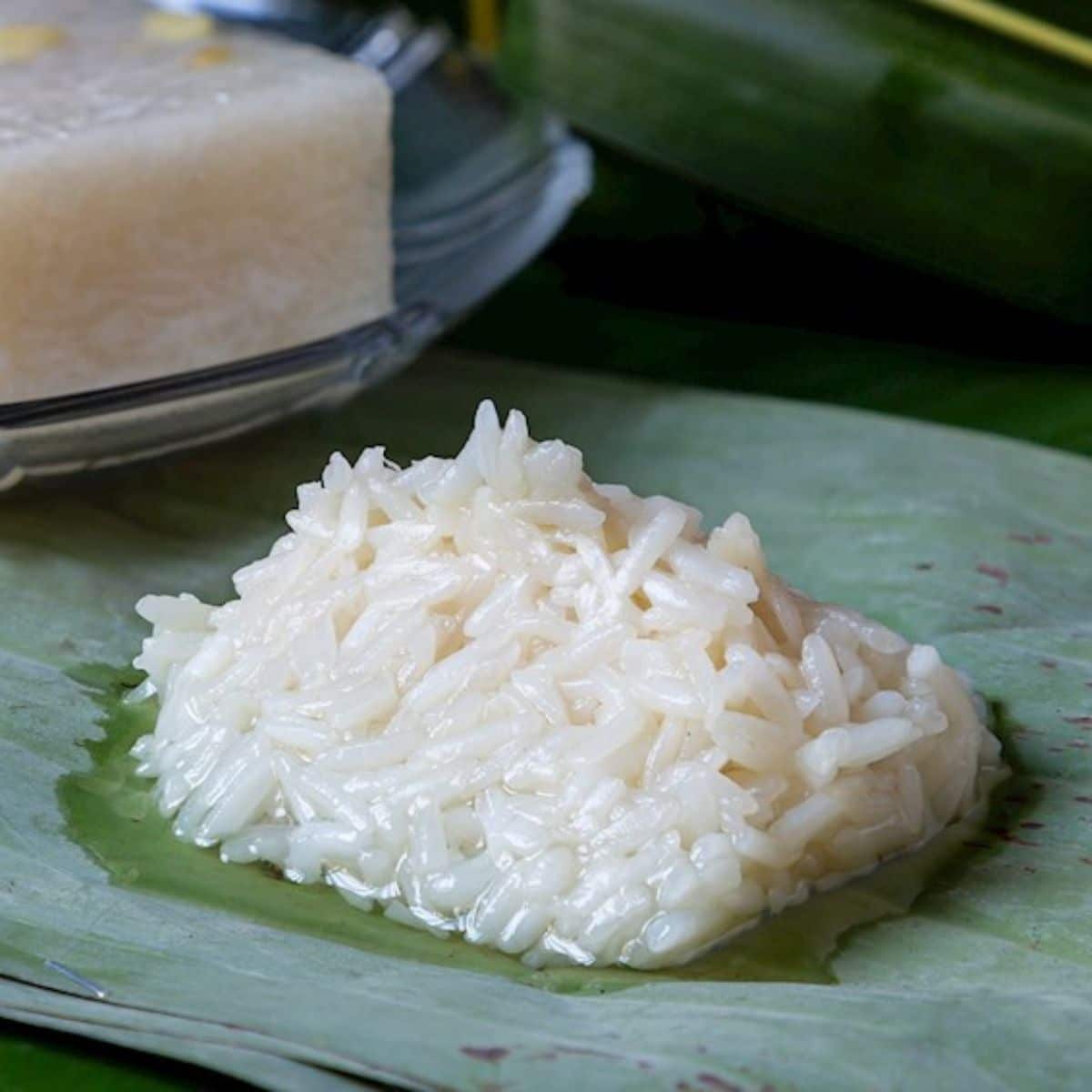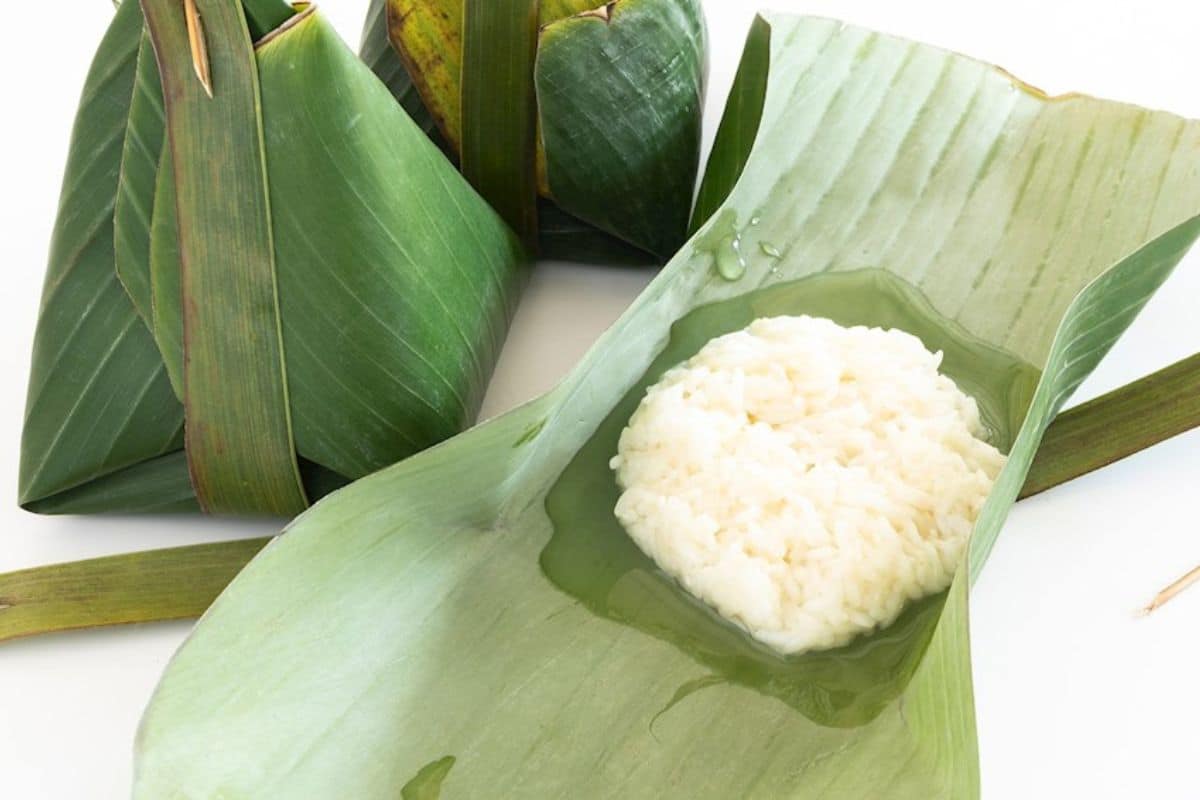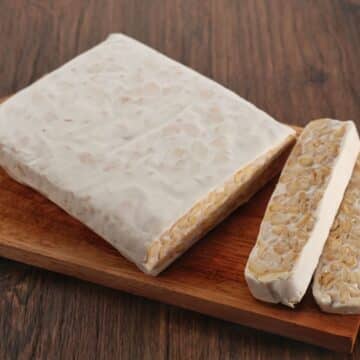Khao Mak is a traditional Northeastern Thai sweet fermented rice that has been enjoyed for centuries as both a dessert and a natural health food. Made by fermenting glutinous rice with a unique starter culture called look pang, this probiotic Thai dessert transforms simple sticky rice into a fragrant, slightly fizzy treat that supports digestion, boosts gut health, and connects us to Thailand's rich culinary heritage.

Index
Jump to:
- Key Takeaways
- From Isaan to Ireland
- What is Khao Mak?
- Khao Mak Origins: A Solution to Leftover Rice
- From Sticky Rice to Sweet Delicacy
- What is Look Pang?
- Cultural Significance
- Nutritional & Health Benefits
- Ingredients You Will Need
- Equipment You Will Need
- How to Make Khao Mak
- Serving Suggestions
- Storage
- FAQ
- A Culinary Gift from Past to Present
- More Fermentation Recipes
- Ask Willow: Our AI Culinary Assistant
- Khao Mak Recipe
- 📋 Recipe
Key Takeaways
- Khao Mak is a traditional Northeastern Thai dessert made from fermented glutinous rice and look pang, a unique fermentation starter.
- This delicacy transforms leftover rice into a probiotic treat that supports gut health and reflects Thai culinary heritage.
- Making Khao Mak involves steaming rice, inoculating it with look pang, and fermenting it for 2-3 days, resulting in a slightly fizzy and sweet dessert.
- Rich in probiotics and enzymes, Khao Mak contains less than 2% alcohol and offers various health benefits.
- Culturally significant, Khao Mak is often prepared for festivals and gatherings, symbolising abundance and community.
From Isaan to Ireland
As an Irish chef exploring Thai food traditions, I've always been inspired by the depth of local fermentation knowledge. From soy sauces and pickles to rice-based ferments, each one carries history and wisdom.
Thara, my partner and integral part of the Holistic Chef Academy team, comes from Northeastern Thailand - the very region where Khao Mak originated. For her, this dessert is more than a recipe. It's a taste of home, tied to family traditions, community festivals, and the resourcefulness of village life, where nothing goes to waste.
Together, we celebrate Khao Mak as both an ancient cultural treasure and a modern-day probiotic superfood.

What is Khao Mak?
Khao Mak (ข้าวหมาก) is a sweet, lightly fermented Thai dessert made from glutinous rice and a natural starter culture called look pang. Within 2-3 days, the rice transforms into a soft, fragrant, slightly fizzy delicacy that tastes like a cross between rice pudding and kombucha.
It's a dessert, a probiotic, and a piece of living history, still beloved today in Thai households, markets, and festivals.
Khao Mak Origins: A Solution to Leftover Rice
Rice is the heart of Thai cuisine and culture. For centuries, wasting it was unthinkable. Villagers in Isaan (Northeastern Thailand) developed Khao Mak as a way to transform leftover sticky rice into something delicious and nourishing.
The oldest records of Khao Mak date back to the Sukhothai period (1238-1583 CE). What began as a solution to food waste grew into a beloved cultural food, symbolizing abundance, creativity, and connection to the land.
For Thara, growing up in this region, Khao Mak was a familiar part of life - shared at family gatherings, festivals, and temple offerings.
From Sticky Rice to Sweet Delicacy
Making Khao Mak is simple but requires patience and care:
- Steaming the Rice: Glutinous (sticky) rice is soaked, rinsed, and steamed until soft.
- Cooling & Inoculation: Once cooled, the rice is sprinkled with powdered look pang (a starter ball made from rice flour, herbs, and natural yeasts/molds).
- Fermentation: The rice is wrapped in banana leaves or placed in a covered container for 2-3 days at room temperature.
- Transformation: Enzymes convert starch into sugar, creating soft, sweet rice with a light fermented liquid called nam toy.
If fermented too long, the rice becomes more alcoholic. Most people enjoy it after 3 days, when it's sweet and lightly tangy.
You can find Khao Mak at most local markets around the country. Sometimes, it's made with black rice too.
What is Look Pang?
The heart of Khao Mak is look pang - a traditional fermentation starter unique to Thai cuisine.
- Made from rice flour, herbs, and beneficial microbes.
- Sun-dried into small round balls.
- Crumbled over cooked rice to trigger fermentation.
Without look pang, true Khao Mak cannot be made. It's the guardian of flavor, probiotics, and authenticity.
Cultural Significance
Khao Mak is more than dessert - it's part of Thailand's cultural fabric.
- Festivals & Celebrations: Often made during Loy Krathong, Songkran, weddings, and temple ceremonies.
- Symbolism: Represents abundance, unity, and blessings.
- Hospitality: Traditionally shared with neighbors and guests, embodying Thai generosity.
Nutritional & Health Benefits
Khao Mak is not only delicious - it's good for you:
- Probiotics: Supports gut health, immunity, and digestion.
- Enzymes: Aid nutrient absorption.
- Low Alcohol: Naturally contains <2% alcohol, similar to kombucha.
- Light & Nourishing: Provides fiber and slow-release carbs with minimal fat.
Traditional Thai wisdom even linked Khao Mak to reducing inflammation and supporting urinary tract health.
Ingredients You Will Need
- 500 g glutinous (sticky) rice
- 1 Look Pang fermentation starter (crushed into powder)
- Filtered water
Equipment You Will Need
- Bamboo steamer or rice steamer
- Mixing bowl
- Banana leaves (or parchment paper)
- Glass jars or ceramic containers
How to Make Khao Mak
Making Khao Mak at home is simpler than it looks, though it requires a little patience and care during the fermentation process. By steaming glutinous rice, inoculating it with the traditional look pang starter, and allowing it to rest for 2-3 days, you'll create a sweet, lightly fizzy dessert that is both comforting and probiotic-rich.
This ancient technique transforms humble sticky rice into a cultural delicacy still loved across Thailand today. Check out the full recipe card below to guide you through the process of making your own Khao Mak.
Serving Suggestions
- Enjoy on its own, slightly chilled.
- Pair with fresh mango or pineapple for balance.
- Sprinkle with toasted sesame or coconut for extra texture.
- Add to a Thai dessert platter with mango sticky rice and coconut jelly.
Storage
- Store in a sealed glass or ceramic container in the fridge.
- Best eaten within 3-5 days.
- The longer it ferments, the tangier and more alcoholic it becomes.
- Do not leave at room temperature in sealed jars, as natural carbonation builds.
FAQ
Sweet, tangy, soft, and sometimes lightly fizzy - like rice pudding meets kombucha!
Yes, but very little (<2%). It's closer to kombucha than beer or wine.
No. Look pang is the essential microbial culture that makes Khao Mak authentic.
Yes, it's naturally plant-based.
Usually 2-3 days, but check daily and stop when you like the flavor.
A Culinary Gift from Past to Present
Despite modern food trends, Khao Mak endures as one of Thailand's most fascinating desserts. It reflects resourcefulness, celebration, and holistic health-values that remain timeless. Sadly, many in the younger generation today don't enjoy or appreciate Khao Mak as much, preferring overly sweetened, Western-style snacks. The rise of ultra-processed foods is having a clear impact on public health in Thailand, making it all the more important to celebrate traditional heritage foods like Khao Mak.
For us at Holistic Chef Academy, Khao Mak holds a special meaning. I see it as a bridge between ancient food wisdom and today's gut health revolution. For Thara, from Northeastern Thailand, where this dessert was born, it is a living connection to her heritage and family traditions.
Together, we share Khao Mak as a reminder of how food can connect people, cultures, and generations - while inspiring us to honor and preserve the culinary wisdom of the past.
More Fermentation Recipes
Ask Willow: Our AI Culinary Assistant
Click the ChatGPT button below to ask Willow for extra tips and inspiration.
Khao Mak Recipe
We hope you enjoy this delicious recipe. If you give it a try, let us know in the comments below - we love hearing your feedback and seeing your recreations.
📋 Recipe







Jim says
Very interesting recipe and insight to Thai heritage, thanks for sharing